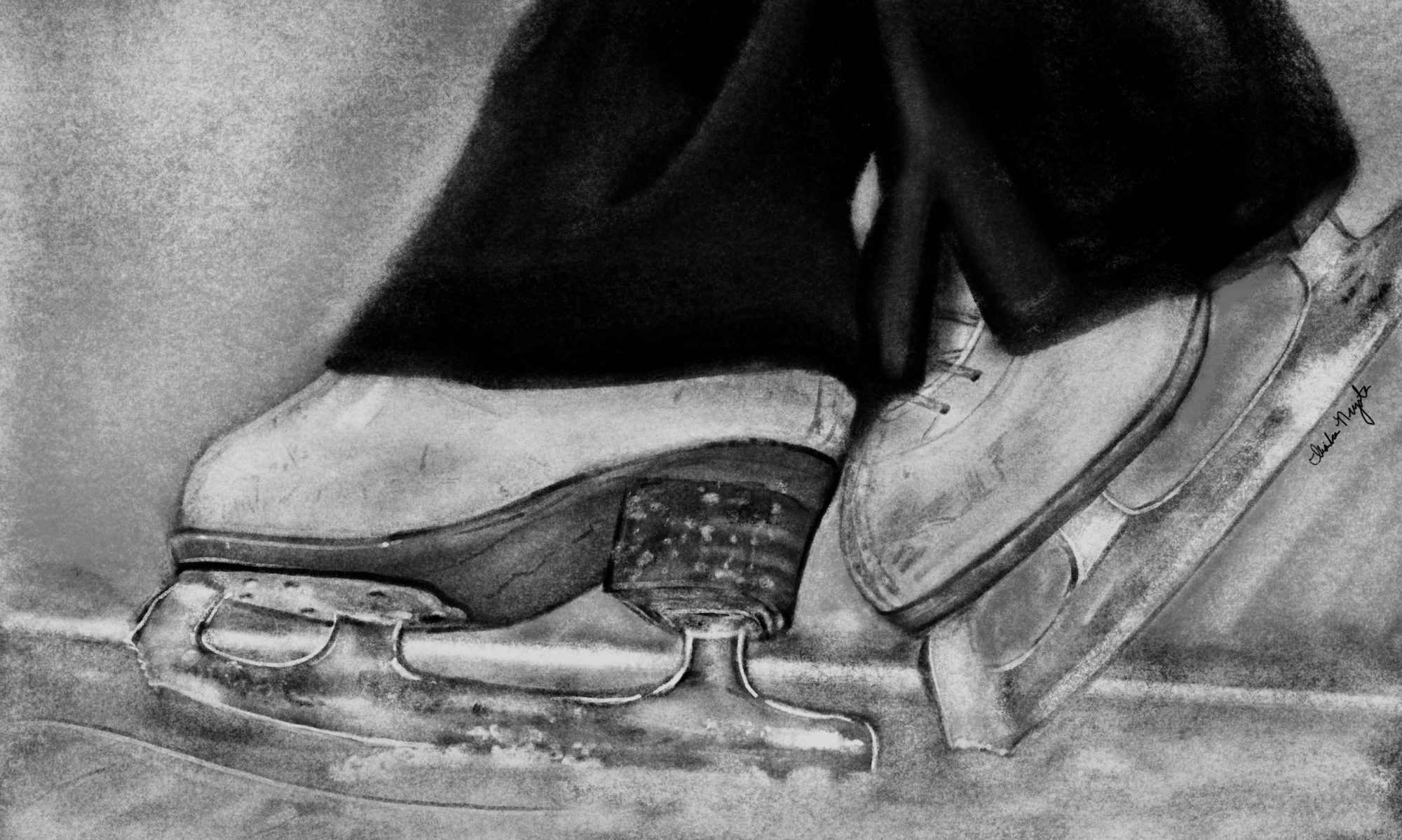Skatergirl is on the ice warming up her jumps.
Axel. Double Salchow. Double Toeloop. Things are going well until she starts warming up her double Lutz.
Bam. Skatergirl hits the ice hard.
For a moment, Skatergirl sits on the ice wallowing in self pity. Then, she pushes herself to her feet and skates over to the boards.
Double lutz. Skatergirl’s least consistent jump.
It’s silly. Skatergirl has been landing everything through triple loop for half a year now, yet she still struggles with her double lutz.
Skatergirl takes a deep breath and thinks back to the correction Skatercoach gave her the last time this happened.
“Remember to let your arms pass close by your sides on the takeoff.”
With the correction in mind, Skatergirl prepares herself for another attempt. She starts her entrance and reaches back with her picking foot. She vaults herself into the air, making sure her arms pass through close to her sides.
Bam. Skatergirl finds herself sitting on the ice yet again.
Ok, Skatergirl thinks to herself. Let’s try that again.
Fall. Fall. Pop.
The more Skatergirl tries to do the jump, the worse it gets. She can’t make it work no matter what she tries. It’s super frustrating.
Now, Skatercoach has a rule. Skatergirl gets five attempts of a jump and if its still not working she’s supposed to move on.
Ugh, Skatergirl thinks. I know I’m supposed to move on, but it’s a double lutz. If I do one more I’m sure I’ll land it.
Forty five minutes later, the Zamboni comes on and Skatergirl gets off the ice. She’s sore and bruised, and after more than 70 attempts, she still hasn’t landed her stupid double lutz.
She’s frustrated and angry. She wants to burst into tears. But, she still can’t let her double lutz go.
“How’s it going?” Mentalgamecoach asks.
“Not great,” Skatergirl says. “Yesterday I spent forty five minutes falling and popping on my double lutz. Then, after my session I got scolded by Skatercoach.”
“I see,” Mentalgamecoach says. “Tell me exactly what happened.”
Skatergirl tells Mentalgamecoach about the events of the day before and at the end she expresses one regret. “I wish I had moved on earlier,” she says. “I worked with Skatercoach on my double lutz this morning, and it was fine.”
Mentalgamecoach’s Tips
Let’s pause here.
Have you ever been in Skatergirl’s position? Have you ever spent an entire session pounding your head against the boards trying to land a jump, only to go in for practice the next day and land it first try?
Now, assuming that you are relatively consistent with the jump, the reason you can’t land it is due to a mental mistake not a technical one.
Let me explain.
Your brain is split into two parts. The “front brain” and the “hindbrain”.
The “front brain” is where your critic lives (the voice in your head that loves to point out all of your mistakes). It helps you to look at your mistakes, analyze them, and come up with solutions.
The “hindbrain” is where your muscle memory is. This is the part of your brain that allows you to execute complex technical skills with ease.
You can’t be in both parts of your brain at once. You’re either in your “front brain” or “hindbrain”. And, this is where the problem lies.
I like to explain this concept to my students using the example of a garage full of muscle memory.
When you’re in your “hindbrain” the garage door is open, giving you access to your muscle memory.
When you’re in your “front brain” the hindbrain garage door is closed, cutting off access to your muscle memory.
Now, there are definitely times when you want to be in your “front brain”. But, when you’re executing an element you want to be in your “hind brain”.
Let’s go back to Skatergirl’s double lutz. On that particular session, no matter what she tried she couldn’t land it. This is because after her first attempt, trying to “fix her technique” put her in her “front brain” and closed the garage door, taking away access to her muscle memory.
Remember, when you are executing a skill that you are consistent with, you want to be in your “hindbrain”. This will allow you to use your muscle memory to effortlessly execute the skill.
So, how do you get into this mystical “hindbrain”? You focus in on the feeling of your current action.
I’ve written about this process in this article. But here’s a quick recap, before you go and do a jump you want to focus on a specific feeling.
Maybe it’s the feeling of the leg extending backwards. Maybe it’s the feeling of the ice under your blade. Maybe it’s the tension in your torso. Maybe it’s the rhythm of the movements you make as you enter the jump.
Whatever it is, you want to focus on the feeling throughout the entire jump. This will keep you “present” and in your “hindbrain”.
Mental skills training can make a difference because it can help you access what is already there during competition and practice.
Start here: download “Confidence Myth Busters,” a complimentary eBook and make a change.

